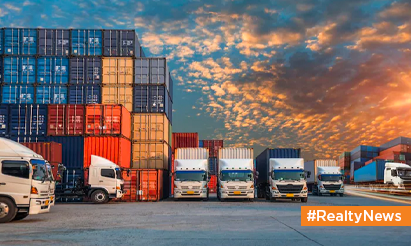Ease of Living Index: Redefining Living Standards
Treading on the path of sustainable urbanization, unparalleled real estate industry, and decent living standards, India has constantly been making use of innovative and strategic measures to keep itself abreast of the rapidly-evolving world economies.

The Ease of Living Index [EoLI] is one such assessment tool that examines the quality of life and outcome of different urban development initiatives. Offering a holistic understanding of Indian cities based on their economic potential, quality of life, resilience, and sustainability, EoLI also incorporates residents’ perspective on the city’s administrative services through a Citizen Perception Survey.
Background
According to the 2011 Report of High Powered Expert Committee by the Ministry of Housing and Urban Affairs (MoHUA), the contribution of urban areas in India’s overall Gross Domestic Product (GDP) is 62-63% and is furthermore approximated to reach 75% by 2030.This demands a greater emphasis on enhancing governance and urban infrastructural quality by maintaining a reasonable balance between rapid urbanization through tackling challenges like pollution, rising crime rates, poor access to water supply, and overcrowding. In this background, the MoHUA prepared a tool to measure the ‘Ease of Living’ in Indian cities.
Ease of Living Index 2020 aims to make cities capable of systematically assessing themselves against global and national benchmarks and adopt an outcome-based approach for urban planning and management.
Criteria
EoLIis structured according to 4 conceptual pillars, namely: Institutional, Social, Economic, and Physical, which constitute the following 15 categories providing a holistic picture of the living standards in a city:
- Governance reflects the city’s performance in efficient service delivery, resource utilization, and encouraging active citizen participation.
- Identity & Culture examines the city’s performance in maintaining a business environment for tourism and restoring historical and ecological sites.
- Education reflects easy accessibility to and quality of educational institutions.
- Health includes the efficiency of healthcare infrastructure and services like the capacity of hospital beds, the number of healthcare professionals, and emergency response time.
- Safety and Security reflect the number of recorded crimes along with the availability of surveillance systems.
- Economy & Employment capture growth in the city’s trade, services, and real estate sector.
- Housing & Inclusiveness include affordable housing with services like toilets, water supply, and solid waste management.
- Public Open Spaces assess the city’s per capita availability of green space and recreation.
- Mixed Land Use & Compactness reflect high residential density, integrated land use, and non-motorized transportation for reduced pollution.
- Power Supply captures the availability of good quality low voltage fluctuations and energy percentage derived from non-conventional sources.
- Transportation & Mobility indicates promotion of public and non-motorized transport and redevelopment of government buildings, public toilets, footpaths, and subways.
- Assured Water Supply reflects the city’s quantity and quality of water supply and smart meter connection coverage.
- Waste Water Management captures the availability of sanitation facilities, effective waste-water management, and storm-water services.
- Solid Waste Management assesses the city’s solid waste collection and disposal system and the level of recycling and reuse of municipal solid waste.
- Reduced Pollution aims to bring down different pollution forms, harming the city’s public health, ecological sites, and cultural heritage.
Ease of Living Index 2020
The government released the rankings of Ease of Living Index 2020 on 4th March 2021 with the following results:
Category: Population more than a million
- Bengaluru
- Pune
- Ahmedabad
- Chennai
- Surat
- Navi Mumbai
- Coimbatore
- Vadodara
- Indore
- Greater Mumbai
Category: Population less than million | 10 cities
- Shimla
- Bhubaneshwar
- Silvassa
- Kakinada
- Salem
- Vellore
- Gandhinagar
- Gurugram
- Davangere
- Tiruchirapalli
Category: Cities with Highest Citizen Participation Survey (CPS) Score
- Bhubaneswar
- Silvassa
- Davangre
- Kakinada
- Bilaspur
Thus, such a strategic assessment tool like EoLI is necessary for a holistic evaluation of cities based on their efforts to cultivate a better quality of life, create infrastructure, and address urbanization challenges.
So, according to you which city would you prefer to live in?
Disclaimer: The views expressed above are for informational purposes only based on industry reports and related news stories. PropertyPistol does not guarantee the accuracy, completeness, or reliability of the information and shall not be held responsible for any action taken based on the published information.




